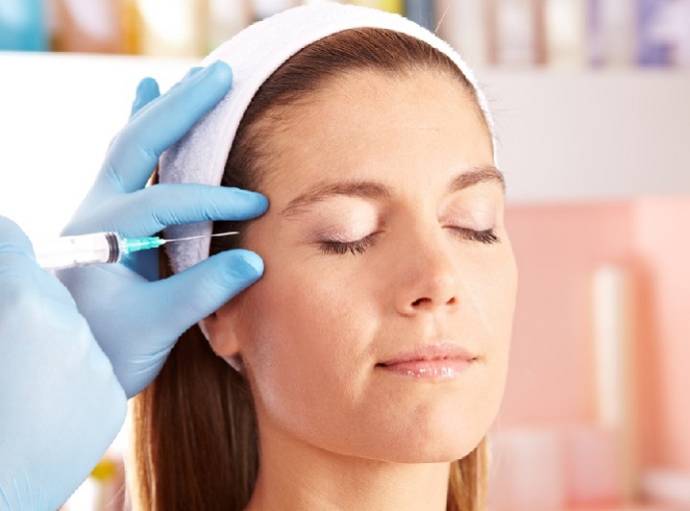Botox has emerged as a remarkable product in the field of cosmetic surgery. It has played a pivotal role in cosmetic enhancement. The wrinkle-reducing properties of Botox have helped medical practitioners combat various signs of aging such as fine lines, elevens, crow’s feet, and forehead wrinkles.
Especially in New York we can find best botox treatment clinics. I have visited James Christian Cosmetics last week and got botox for my crows feet and it is efficient.
However, this magical neuromuscular blocker has stunning therapeutic applications for treating various other medical conditions. Following are some of the medical conditions that Botox can treat:
Excessive sweating
It is entirely reasonable to sweat during a workout. However, sweating profusely throughout a day is an unpleasant condition described as Focal Hyperhidrosis or Axillary Hyperhidrosis. As per a report by WebMD, the condition affects over one million of the US population. It causes a person to sweat four times more than usual.
Studies suggest that constant excessive perspiration during day-to-day activities may negatively influence people by lowering their self-confidence and generating feelings of embarrassment. People may experience noticeable sweating at any time of the day during work presentations, public speaking, and casual social settings.
An underarm Botox injection serves as a useful treatment option for people who need help with excessive sweating and body odor trouble. Botox injection works by paralyzing the small underarm glands responsible for pumping sweat onto the skin surface. It results in reduced sweat and less unpleasant odor.
Eye spasms and twitching
Eye Spasm, Eye dystonia or Blepharospasm refers to the uncontrolled and frequent blinking of the eye. Patients may experience additional symptoms like fatigue, eye twitches, emotional tension, watery eyes, irritation in the eyes/eyelids, or sensitivity to bright light. In some cases, the symptoms may subside when a patient is sleeping or centralizing on a specific task.
Frequent spasms may turn simple everyday tasks like driving, reading, or using a computer, a nightmare. Botox injections can help reduce the involuntary behavior of the eyes. When the doctor injects Botox into the eyelid muscles, it paralyzes them thereby prohibiting any irritating, spastic movements.
Crossed eyes
Crossed eyes or Strabismus refers to the improper alignment of the eyes due to unbalanced surrounding muscles. The condition can cause problems in eyesight such as double vision, inability to focus, eye soreness, blurred vision, or lack of depth perception. It is often difficult to hide thereby causing a severe aesthetic inconvenience for the patients.
Botox injections can treat the condition safely and effectively by relaxing the overacting eye muscle, that pulls the eye sideways. In some cases, Botox treatment can completely realign the eyes of the patients.
Chronic migraines
Some people may experience severe headaches or migraines. The patient may experience other condition with pain like nausea or sensitivity to noise and light. Chronic migraines can last for four or more hours and may reoccur every other day.
Botox injections in the neck and head muscles can help relieve the pain and combat the frustration. A repetition of the treatment every 12 weeks can help prevent chronic migraines from frequently recurring and can reduce their effects in the long term.
Various muscular conditions
Many people suffer from the muscular condition called cervical dystonia or spasmodic torticollis. It is a nerve disorder characterized by the involuntary contraction of the neck and shoulder muscles. The disease causes abnormal movement and uncontrolled tilting or turning of the head, muscle tremors, and pain. Botox injections can help cure the condition by relieving the symptoms in the affected muscles.
Bladder weakness and bowel disorders
An overactive bladder often causes frequent unexpected contractions. Eventually, the patient may experience loss of bladder control, a sudden urge for urination, and frequent urination. Even usual day-to-day activities can be painful for people suffering from bladder incontinence.
A study by the Mayo Clinic suggests that Botox injections can help people with an overactive bladder. Urologists can carefully inject Botox through the urethra into the bladder muscles using a special instrument called cystoscope.
The injected Botox eventually paralyzes the bladder thereby regulating bladder contraction and normalizing urination. Studies confirm that the patients may experience the benefits of Botox treatment for several months once treated.
Depression
Botox treatment can help in alleviating signs of depression and reducing adverse effects caused by mental illness. The Botox treatment works by regulating the facial musculature responsible for mood states. It provides an instant gratification factor via aesthetic improvements. The procedure relies on the hypothesis that a person starts projecting a positive outlook and attitude with an improved facial expression.





